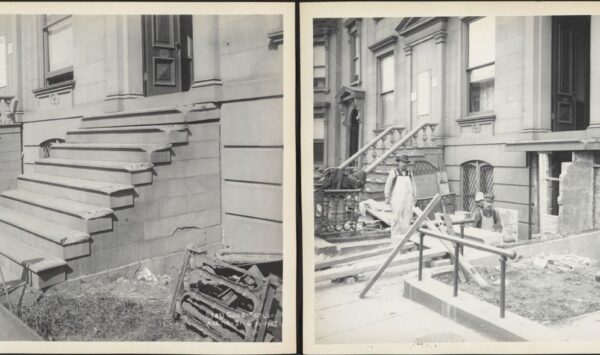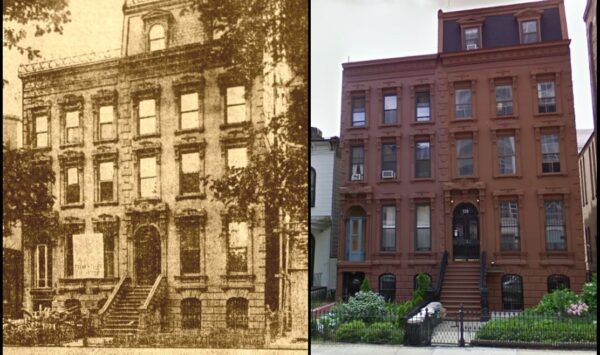HOW TO REMOVE A BROWNSTONE STOOP (1905)

******************************************************************************************************************************** Brownstone Detectives investigates the history of our clients’ homes. The story you are about to read was composed from research conducted in the course of one of those investigations. Do you know the history of YOUR house? ******************************************************************************************************************************** Today, brownstone owners shake their heads in wonder. “Why would anyone intentionally remove the stoop from their own townhouse?” they muse. The stoop, like a timeless portrait’s gilded frame, is a vital element to the design and use of the townhouse. It carries the focus of the viewer into the house itself, just as the stoop physically transports the resident bodily into the house. A brownstone house simply cannot exist without its stoop. Well, like shag carpeting in the 1970s, stoop removal was all the rage in the 1940s. “Remove your stoop and turn your brownstone into apartments,” was the sage advice of contractors hoping to bring their clients’ properties into the 20th century. “Remove your brownstone stoop and add value to your property,” they said. If you didn’t see it happen, though, with your own eyes, you might assume that the destruction was merely accidental. Perhaps a car crashed into the structure and damaged the stoop beyond repair, or time and the elements slowly destroyed the stoop. Well, here, thanks to the New York Historical Society, we have pictures – in all their “glory” – of the “before,” “during” and “after” snapshots of the destruction of one of those august brownstone set of steps. These, documenting the disappearance of a […]
HOW YOUR BROWNSTONE LOST ITS SOUL (1915)

******************************************************************************************************************************** Brownstone Detectives investigates the history of our clients’ homes. The story you are about to read was composed from research conducted in the course of one of those investigations. Do you know the history of YOUR house? ******************************************************************************************************************************** It started just 20 years after construction began on “Brownstone Brooklyn” – our brownstones and townhouses began to lose their “souls.” Constructed in a time when owners needed three and four stories of room for large families, they had, in those times, existed as the epitome of style and class. Now that so much square footage so close to the city center was becoming too dear for so many residents (who did not have families or who needed much less room), builders were beginning to construct large apartment houses that provided all of the necessities of home within a smaller, but more stylish and efficiently laid out, space. Such competition from newer construction caused the formerly beloved brownstone to lose its lucrative “soul.” THE SOLUTION TO ANTIQUITY In 1915, real estate broker Frank Tyler struck upon an idea that turned out to be, in essence, a paradigm change: Take an old inefficient brownstone and turn it into a stylish and updated apartment house. Tyler noticed that “the average three-story and basement dwelling of old-fashioned style” had “become a drag on the real estate market.” Because of “great changes that have taken place in construction, and the popularity of apartment house living,” brownstone owners had been experiencing a decline in the rental […]